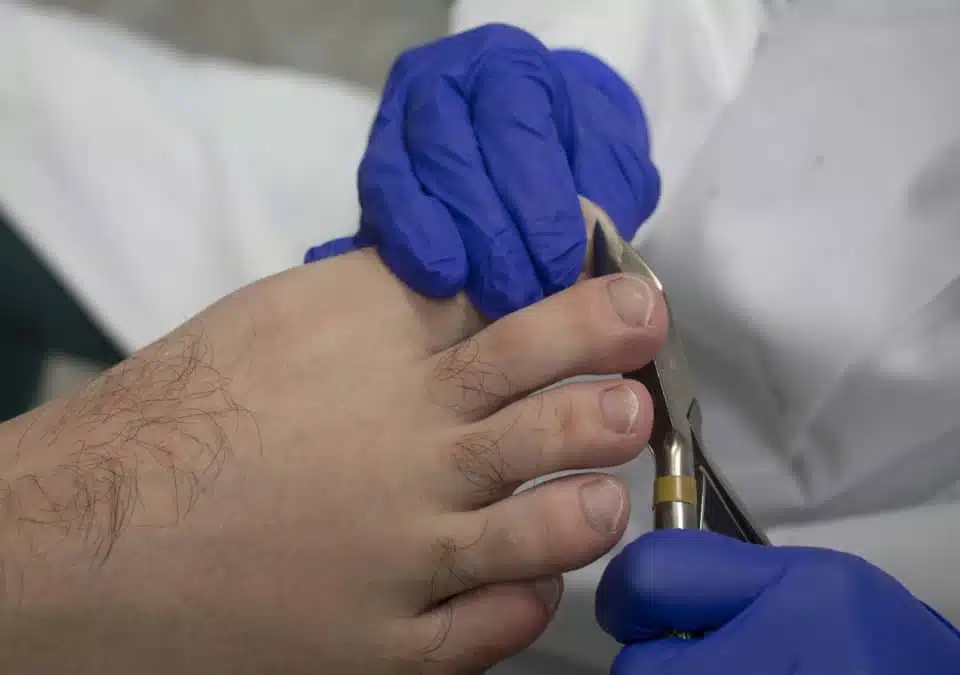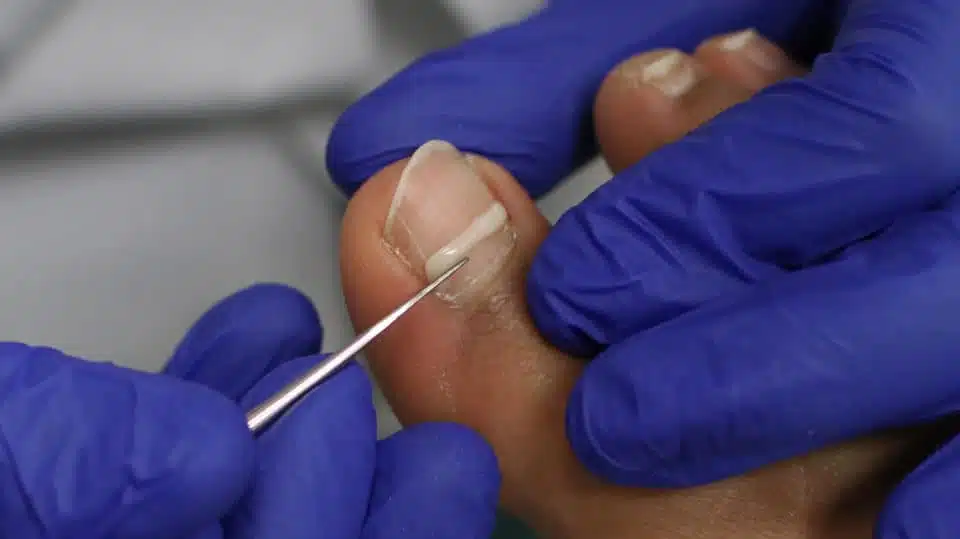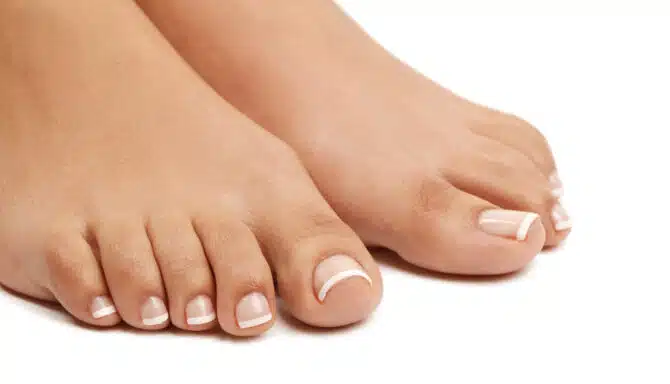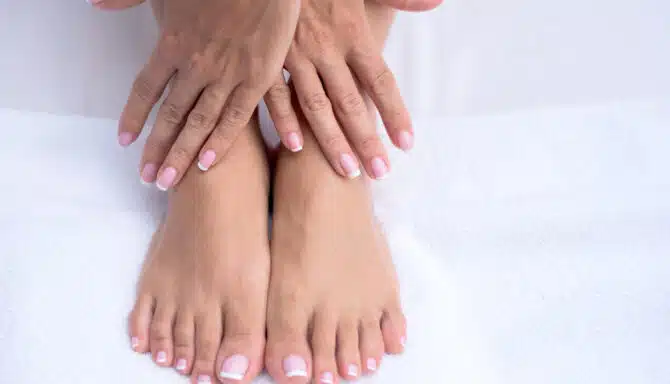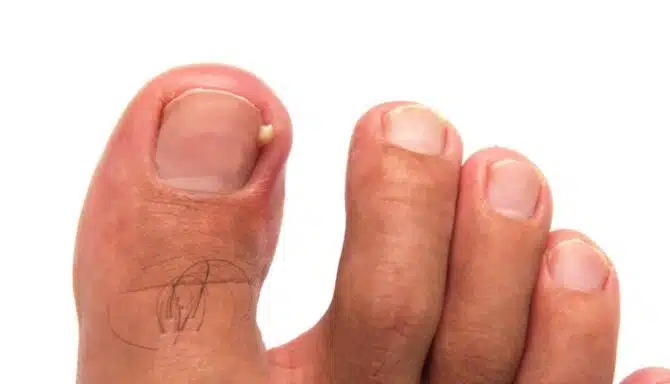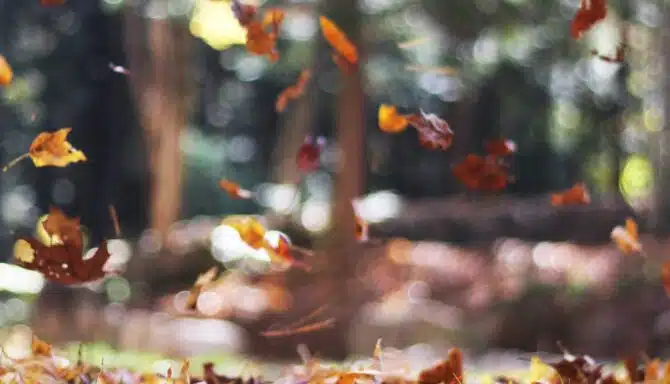September 18, 2025
Toenail health is an important part of overall foot care, yet conditions like involuted toenails often go unnoticed until discomfort arises. If you’ve noticed your toenails curling inward or becoming unusually curved, you might be dealing with an involuted toenail. Understanding this condition can help you manage symptoms and seek proper treatment before complications occur.
What Are Involuted Toenails?
Involuted toenails, also called curved or pincer nails, occur when the edges of the toenail curl inward toward the skin. This excessive curvature can cause the nail to pinch the nail bed and surrounding skin, leading to discomfort or pain. It also makes them prone to becoming ingrown.
Causes of Involuted Toenails
Several factors can contribute to the development of involuted toenails, including:
Genetics: Some people inherit a tendency toward curved toenails.
Improper Footwear: Tight, narrow shoes can exert pressure on the nails, encouraging them to curl.
Injury: Trauma to the toe can alter nail growth patterns.
Fungal Infections: Nail infections may cause thickening and distortion of the nail plate.
Aging: Toenail shape and growth can change with age.
Underlying Medical Conditions: Certain diseases like psoriasis or circulatory problems may affect nail health.
Symptoms to Watch For
Toenails that curve sharply inward, sometimes forming a tube shape.
Discomfort or pain along the sides of the toenail.
Redness, swelling, or signs of infection around the nail edges.
Difficulty trimming nails due to their shape.
Formation of calluses or corns near the nail edges.
Treatment Options for Involuted Toenails
Conservative Care
Proper Footwear: Choose shoes with wide toe boxes to reduce pressure.
Regular Nail Care: Careful trimming and filing can help manage nail shape.
Moisturizing: Keeping nails and surrounding skin hydrated may reduce brittleness.
Padding: Using protective pads can cushion the nail and reduce irritation.
Medical and Professional Treatments
Nail Bracing or OnyFix: Special braces can gently correct nail curvature over time.
Debridement: A podiatrist can carefully trim thickened or curved nails.
Treatment of Infections: Antifungal medications if infection is present.
Surgical Options: In severe cases, part or all of the nail may be removed to relieve pain and prevent recurrence.
When to See a Foot Specialist
If you experience persistent pain, signs of infection, or difficulty managing your involuted toenails, it’s important to consult a foot care professional. Early intervention can prevent complications such as ingrown nails or infections.
You should also see a specialist if you find you're having difficulty trimming your toenails; curved toenails are notoriously difficult to trim.
April 10, 2025
Curved toenails can indicate various underlying toenail conditions, each with unique causes and additional characteristics. They also don’t always look the same. Toenail curvature issues can range from having a severe Ram’s Horn toenail, accompanied by other symptoms like thickening and discoloration, or small pincer nails that pierce your skin. Let’s learn about curved toenail causes, and most importantly, how a chiropodist or podiatrist can treat curved toenails at a foot clinic so complications don’t arise.
Why Do Toenails Curve?
https://www.youtube.com/shorts/Z6VYvI6CJQs
To understand the best ways of preventing curved toenails, it’s important to learn how healthy toenails grow. They should naturally grow forward in a slightly arched but mostly flat shape, following the contour of the toe. This process begins in the nail matrix, the tissue under the skin at the base of the nail, where specialized cells produce layers of keratin—the protein that makes up the nail.
As new cells form, older cells are pushed outward, harden, and form the visible nail plate. Ideally, the nail grows evenly and straight across, guided by both the shape of the matrix and the direction of mechanical forces applied to the toe, like walking or wearing shoes. The nail bed beneath provides support and helps keep the nail anchored and flat as it grows. A balance between nail thickness, width, and surrounding skin tension is key to maintaining this typical shape.
Toenails start to curve when something disrupts this balance.
Repetitive Trauma from Ill-Fitting Footwear
One common reason is uneven pressure and toe crowding. Tight footwear or repetitive trauma can push the nail’s edges downward or inward over time. That’s why one of the best ways of preventing curved toenails, or virtually all foot conditions for that matter, is purchasing and wearing only shoes that fit properly, allow your toes to splay comfortably, and have ample cushioning, arch support and shock absorption. It’s better to have a small selection of solid, high-quality shoes that support foot health than several pairs of low-quality, poorly designed shoes that cramp your toes.
https://www.youtube.com/shorts/rwNLRZ-MN_M
Genetics
Genetics also play a role in abnormal toenail growth; some people naturally have a more curved nail matrix or a narrower nail bed, both of which can encourage curling. If keratin production is uneven—say, one side of the nail grows faster than the other—the nail can begin to twist or curve as it extends.
Underlying Health Conditions
Inflammatory conditions, infections, poor circulation, or chronic diseases like diabetes can also interfere with normal nail growth by altering cell turnover in the matrix or causing changes to the skin and tissue around the nail. As a result, curved toenails are often not just a cosmetic issue—they can signal deeper structural or health-related concerns.
Curved Toenail Causes
Whether your curled toenails are the result of a sinister condition or simply a genetic growth pattern you’ve inherited, preventing them from getting worse is key. No matter the cause, proper trimming (straight across with simple nail clippers) and wearing shoes that fit well are two of the best things you can do from home to prevent painful complications and live life as comfortably as possible. Below you’ll find some of the most common causes of curved toenails:
Ingrown Toenails (Onychocryptosis)
Ingrown toenails are tricky as they look deceptively mild. But complications, like painful infections, can arise if you ignore them. They develop when the edge of a curved toenail grows into the surrounding skin, causing swelling, redness, and sensitivity. They can look curved, but they also look like a small “extra nail” on the edge of the main nail. It most commonly affects the big toe, and naturally curved toenails (involuted nails) are more likely to become ingrown because their growth pattern is already unusual.
Trimming the nails too short or rounding the edges can also encourage the skin to fold over the nail edge, allowing it to grow inward instead of outward. Repeated pressure or trauma from sports, stubbing the toe, or restrictive footwear (in the toe box, like narrow, pointed high heels) can also disrupt normal growth and set the stage for an ingrown nail to form.
https://www.youtube.com/shorts/B5a3yIgokh8
Pincer Nails (Trumpet Nails)
Classified by podiatrists and chiropodists as “the most painful type of ingrown toenail,” pincer nails, or trumpet nails, occur when the sides of the toenail curve inward toward each other, sometimes so dramatically that the edges look like they want to meet underneath the toe!
This shape creates a pinching effect on the nail bed and surrounding tissue. While some people are born with a naturally curved nail structure that gradually tightens over time, others develop this condition due to external pressures. Long-term use of tight shoes, particularly those with narrow toe boxes, is a major contributing factor. Certain systemic conditions, such as autoimmune disorders or circulatory problems, may also affect the nail matrix and contribute to this unusual curvature. Additionally, aging can play a role, as nail shape and growth patterns tend to change over time.
Onychogryphosis (Ram’s Horn Nails)
View this post on Instagram A post shared by Feet First Clinic (@feetfirstclinic_)
Onychogryphosis is a condition where the toenail becomes dramatically thickened and begins to grow in a distorted, curved, or spiraled shape that resembles a ram’s horn. It often affects the big toe and progresses gradually over time. The nail’s irregular growth is usually the result of uneven cell production in the nail matrix, where one side grows faster than the other.
The most common causes include repetitive trauma (like years of wearing ill-fitted shoes), long-standing fungal infections, or neglect of nail trimming. It’s more frequently seen in older adults or individuals with limited mobility who may struggle with basic foot care. Certain systemic conditions, including psoriasis and vascular disorders, may also interfere with healthy nail growth and lead to this thickened, curved form.
Curved Toenail Pain Relief and Solutions: Nail Disorder Treatment
Toenail curvature can cause pain and nagging discomfort that disrupts your daily life. Remember, the nail should not be growing this way, and it’s up to you to take the first step towards finding a solution. Chiropodists and podiatrists offer several effective treatments to address curved toenails, tailored to the severity and underlying causes. Below are some common treatments available at foot clinics:
Proper Fitting Footwear
Wearing shoes that are the correct length 0with a wide toe box is crucial for preventing and alleviating discomfort associated with curved toenails. Footwear that allows ample space for the toes reduces pressure on the toenails, minimizing the risk of them growing into the surrounding skin. Properly fitting shoes not only aid in preventing the development or worsening of curved toenails, but also provide some pain relief for existing conditions that need accommodation. Ensuring that shoes complement the natural shape of the foot without squeezing or compressing the toes is a simple yet effective measure in maintaining toenail health.
Medical Pedicures
Medical pedicures are performed by trained chiropodists or podiatrists and focus on the health and hygiene of the feet and nails. Unlike cosmetic pedicures, these procedures address underlying issues and focus more on nail maintenance and health than aesthetic appearances (although the nails always look clean and fresh afterwards!). During a medical pedicure, the specialist will carefully trim and reshape the toenails using sterilized instruments, reducing the risk of further complications.
They are a common treatment for people with diabetes who cannot cut and clean their nails properly without assistance, and who need an extra set of eyes and expertise to spot abnormalities.
OnyFix Nail Correction System
The OnyFix system is a non-invasive, highly innovative, and pain-free treatment designed to correct curved toenails—especially ingrown toenails. It involves applying a specialized composite material to the nail, which hardens and acts as a brace, guiding the nail to grow in its natural shape without exerting direct force. This method is suitable for various nail shapes and is particularly beneficial for patients seeking an alternative to surgical interventions. The Onyfix system allows individuals to continue their daily activities without restrictions, including swimming and wearing nail polish.
https://www.youtube.com/shorts/LoCcoKOhV7E
Nail Avulsion Surgery
In severe cases, such as with ram's horn toenail, surgical intervention may be recommended. This procedure involves the partial or complete removal of the affected toenail under local anesthesia. By removing the deformed nail, the underlying tissue can heal properly, and a healthier nail may regrow. Alternatively, a solution called phenol may be used to prevent nail regrowth.
July 11, 2024
There's always the right tool for the job. Using each tool for its intended purpose is best, or you risk doing more damage than good. That's why fingernail clippers and toenail clippers exist.
To understand why, it's important to understand the difference between toenails and fingernails. Toenails are thicker, harder, and grow slower than fingernails because your feet and hands serve different functions. Toenails also have a greater surface area.
In this blog post, we explain why you should avoid using fingernail clippers for your toenails and opt for toenail clippers exclusively.
Reduce the risk of bacterial or fungal contamination
For one, separating your nail tools prevents contamination and possible spread of bacteria and fungus. Given how exposed your hands are every day, you wouldn't want to spread any bacteria to your feet.
When in doubt, clean your clippers with 70%—90% isopropyl alcohol.
Fingernail clippers may not work on toenails
When looking at fingernail vs. toenail clippers, the size difference is stark. Fingernail clippers are smaller, narrower, and curved. Toenail clippers are larger, wider, and straight across, as you should trim your toenails straight across. Cutting them with a curved edge increases your risk of ingrown toenails.
If you want more guidance on choosing the tool for your toenails, read our blog post on our top choices for toenail clippers.
Limit the risk of cracking and damaging your toenails
Using sharp, rigid toenail clippers makes trimming easy and more effective. Using fingernail clippers means you'll need to apply more pressure to cut the nail and risk damaging or even cracking the toenail.
If you don’t have the right tools, enough time, or simply the confidence to focus on a nail trim, try a medical pedicure instead. It includes the right nail trimming procedure and includes moisturization, thorough cleaning, and more. Before the nail trim, a chiropodist also examines your feet for other foot conditions.
Prevent ingrown toenails
You'll also notice the curvature of fingernail vs. toenail clippers. Fingernail clippers are curved and meant to follow the contours of your fingernails. On the other hand, toenails are plateaued and should be cut straight across. Using a curved tool on your toenails puts you at risk of jagged edges, nail splitting, or could be a root cause of ingrown toenails.
If you wish, use a nail file to round the edges. This tool is necessary for properly smoothing the edges of the nails. After the trimming, there will likely be some jagged edges, sharp corners, and “spikes.”
March 18, 2024
Toenail care is your shield from future foot issues. Foot conditions affecting the toenails can lead to infections, fungus, brittle and damaged nails, pain, bleeding and more. But you have the power to prevent these complications! By investing in proper footwear, learning to trim your nails properly, and more, you can take the reins on your toenail health.
Let's talk toenails!
Preventing Fungal Infections and Other Toenail Conditions
Practice Proper Toenail Trimming
https://youtube.com/shorts/Z6VYvI6CJQs?si=adXF6P8gmNXykWic
It would be nice to have a professional always trim our nails for us, but sometimes we do have to do toenail care ourselves. To prevent issues or conditions, trim your nails following these two simple steps:
Use nail clippers to trim the nails, not down the sides or leaving any small spike of nail and avoiding curved edges.
Smooth edges with a nail file if needed.
Keep Your Feet Clean and Protected
Fungal toenails love when you forget to care for your feet.
Make sure you always thoroughly clean and dry your feet before wearing socks and shoes. To go the extra mile and protect from skin issues, moisturize, exfoliate and use a foot file.
Avoid areas where contagious fungal viruses breed and are passed along. These include public pool grounds, public showers, shared locker rooms, and more. If you frequent places like this, always wear shoes.
Pedicure safety and hygiene are also very important when it comes to prevention. Schedule medical pedicure appointments with your chiropodist instead of a cosmetic pedicure to avoid contracting a contagious fungal infection and for a more health-focused experience. Learn more about the difference between a cosmetic and medical pedicure.
Make Healthy Footwear Choices
The link connecting toenail issues and footwear may seem unclear, but picture it this way:
When our shoes are too tight it often means there is not enough room for the toes to spread out naturally. This can wreak havoc on your nails and you also risk annoying ingrown toenails or a cracked toenail. Always buy shoes with enough room in the toe box!
Take it to the next level by looking for running shoes with mesh uppers that allow air to flow inside the shoe. This is a bonus way of keeping your toes fresh and protecting against fungal infections. Check out this handy shoe shopping checklist for even more help!
Toenail Care for Pre-existing Conditions
Anti-fungal Treatments for Toenails
You won’t be able to treat a current fungal infection without using antifungal products or visiting a chiropodist. Products include sprays, ointments and sometimes pills. At times, over-the-counter versions are enough, but other times, you’ll need a prescription for a persistent infection. Chiropodists can also perform nail debridement, which involves removing the infected part of the nail and thinning the outer layers of the toenail. This allows prescription-strength topical antifungal medication to penetrate the toenail and reach the fungus.
Treating Cracked Toenails
Cracked toenails are more of a nuisance than a serious problem. But messing with your toenails in any way can still cause bleeding and pain. You may be more susceptible to cracks if your nails are weak and brittle.
If you’re looking for some ways to speed up nail growth, but also to strengthen your nails as they are, try these toenail growth tips:
Avoid trimming too close to the skin
Again, wear well-fitting shoes. Tight shoes can disrupt healthy toenail growth.
Protect toenails during physical activities.
Avoid excessive use of nail polish. While polish itself doesn’t slow growth, some types can cause toenail dehydration, making your nails more likely to crack.
Eat a balanced diet for nail health.
Treating Ingrown Toenails
Depending upon the cause, ingrown toenails can be treated by a chiropodist in clinic. Sometimes all the treatment requires is removal of the offending spike of nail that is pressing into the skin. Other times products can be added. OnyFix is one way to treat ingrown toenails especially if the nails look curves- also known as involuted. It involves the application of a specialized corrective strip to the affected nail. Nail avulsions can also be a good idea for chronic, severe ingrown nails, and chiropodists may tackle infections using certain draining methods.
https://youtube.com/shorts/LoCcoKOhV7E?si=zNmh8TTpUgmb6aha
Treating Toenail Discolouration
Discoloured toenails are tricky because the colours can vary wildly. Discolouration caused by a fungal infection (green or yellow) may be treated using similar methods as fungal toenails. But if your discolouration is black, blue, purple, or red, this is probably linked to a mild blunt-force trauma injury (like dropping something on your toe). It’s best to schedule a nail care appointment to determine the culprit!
January 15, 2024
At some point, we've all experienced the discomfort of a pesky ingrown toenail. It occurs when the nail plate grows into the surrounding skin and causes inflammation. Ingrown toenails are among the most common toenail conditions and are particularly common in the big toe.
Whether it's a result of a stubbed toe, improper nail-trimming habits, or the perils of snug footwear, ingrown toenails can quickly turn into a painful ordeal. In this article, we'll delve into the causes behind these troublesome toenail invaders, explore effective home remedies to ease the discomfort, and discuss when to seek professional help for a more permanent solution.
Causes of Ingrown Toenails
Improper nail trimming
Cutting toenails too short or straight across can encourage the nail to grow into the skin. The skin surrounding the nail should not be higher than the toenail as this may cause the nail to grow into the skin instead of on top of it. Instead, cut the nail to the skin's edge and not any deeper.
Ill-fitting shoes
Tight or narrow shoes can pressure the toes and push the skin into the nails
Injury or trauma
Stubbing your toe or other injuries can lead to ingrown toenails.
Genetics
Some people may have a genetic predisposition to ingrown toenails. their nails can be too wide for the toe or there can be too much skin on the sides of the toe
Poor foot hygiene
Not keeping the feet clean and dry can affect the skin around the nail bed, and contribute to the development of ingrown toenails.
At-home remedies for Ingrown Toenails
At-home remedies are an option while you wait for professional treatment. Note: Never attempt to cut the ingrown toenail yourself.
Salt Water Foot Bath
Soak the affected foot in warm salt water for 5 minutes daily to reduce inflammation. Pad dry and then apply a dressing.
Antibiotic ointment
Apply an antibiotic ointment to reduce the risk of infection.
Wear proper footwear
Choose shoes with enough room for your toes, and avoid tight-fitting footwear.
Avoid aggravating activities
If possible, avoid activities that put extra pressure on the toes.
Professional treatment remedies for Ingrown Toenails
It's best to consult a professional for proper care and treatment. A chiropodist or foot specialist may perform any number of the following professional treatments:
Proper toenail care and trimming
Cutting toenails too short or at the wrong angle can cause the nail to ingrow. A chiropodist can properly trim and cut your toenails in a way that promotes proper nail growth. They can trim to treat an existing ingrown toenail, or trim your toenails preventatively, for example, during a medical procedure or nail care appointment.
A chiropodist can also soften the skin, lift the edge of the nail from the skin, and then prop the corner of the nail over the skin edge until the skin heals.
Onyfix
Onyfix is a special composite material that the chiropodist applies it in a band across the nail. It acts like a nail brace to correct the nail's growth.
Partial nail avulsion (PNA)
This is done for constant ingrown toenails, constant infection or if clinical care is not resolving the issue. A local anesthetic first numbs the toe. A narrow vertical strip is then removed from the edge of the affected side of the nail down the entire length. Antibiotics and a dressing are applied to the exposed nail bed to prevent infection.
Total nail avulsion (TNA)
Total nail avulsion is similar to a partial nail avulsion, except the whole nail is removed. This surgical procedure is performed if other more conservative approaches are insufficient.
When to seek professional help for Ingrown Toenails
Sometimes treating ingrown toenails at home can make things worse. It is also a good idea to get professional help to assess the nail and to offer advice on how to prevent ingrown toenails from coming back. In all cases seeking professional help early is the best treatment.
Here are a few scenarios where you should seek professional help early:
Any signs of infection
If there is increased redness, swelling, or drainage of pus, it may indicate an infection that requires medical attention.
Moderate to severe pain
Seek professional help if the toenail pierces the skin or if you experience moderate to severe pain. Pain and soreness can also be related to infection.
Persistent ingrown toenails
If ingrown toenails are a recurring problem, seeing a chiropodist for a more permanent solution may be necessary.
Underlying medical conditions
Individuals with diabetes, Rheumatoid arthritis or circulatory disorders should seek professional care for ingrown toenails at any stage.
It's essential to address ingrown toenails promptly to prevent complications. If you're unsure how to treat an ingrown toenail or suspect an infection, it's advisable to consult with a healthcare professional or podiatrist for proper diagnosis and treatment.
November 2, 2023
As the leaves begin to fall and the air grows crisp, many of us look forward to the cozy comforts of autumn: sweaters, changing colours, and pumpkin spice. However, with the arrival of fall comes a less welcoming guest: dry feet. The air dries as temperatures drop, leading to dry, cracked skin, itchiness and other foot-related issues.
This guide explores common causes of dry feet during the fall and offers practical tips and remedies to help you maintain soft, healthy feet as you navigate the season's challenges. Whether preparing for brisk walks through fallen leaves or cozy evenings by the fireplace, taking care of your feet is a crucial component of embracing the beauty of autumn without the discomfort of dry skin. Here are some tips to help you maintain proper foot care during the fall and winter months:
1. Stay hydrated
While we often focus on external solutions, it's essential to remember that healthy skin starts from within. Staying well-hydrated is the foundation of soft, supple skin, including your feet. When your body is adequately hydrated, it helps your skin maintain its natural moisture balance. So, sip on those warm beverages synonymous with the season, and remember to drink plenty of water throughout the day.
2. Use rich foot creams
Autumn is the perfect time to upgrade your skincare routine, and your feet deserve special attention. Invest in a high-quality foot cream with nourishing ingredients like urea, shea butter, cocoa butter, or hyaluronic acid. Apply your cream daily to lock in moisture and protect your feet from the drying effects of the season.
3. Regularly exfoliate
As the weather transitions, your skin may accumulate dead cells, making it harder for moisturizers to penetrate. To overcome this, indulge in a gentle exfoliation routine. Use a foot scrub or a pumice stone to remove dead skin, but be cautious not to overdo it – gentle is better. A medical pedicure can also help revive your dry skin in the fall, as the chiropodist will safely remove any dry, dead skin and then apply a medical-grade moisturizer during your treatment.
4. Soak your feet
What could be cozier than a warm foot soak on a chilly evening? Soaking your feet in warm water relaxes you and helps rehydrate your skin. Enhance the experience by adding a lavender or tea tree for extra relaxation and antimicrobial benefits.
5. Pick the proper footwear
Footwear plays a significant role in maintaining foot health. When heading out into the cool fall weather, opt for insulated, water-resistant footwear that protects your feet from moisture and potential frostbite. Ensure your shoes are also the right size to avoid constriction and discomfort, a common cause of dry, cracked skin.
6. Practice proper nail care
Pay attention to your toenails. Trim them straight across, not too short, to prevent ingrown toenails. A good-quality nail clipper can make this task a breeze.
7. Ask a professional
If you're dealing with severe dryness, deep cracks, or persistent foot problems, it's wise to seek advice from a foot specialist, like a chiropodist. They can offer personalized solutions and treatments tailored to your specific needs.
8. Keep moving
Exercise is not only good for your overall health but also for your feet. Regular physical activity improves circulation, which, in turn, benefits your feet. However, make sure to choose appropriate footwear for your chosen activities.
9. Welcome and embrace indoor comforts
Slip into soft, cushioned slippers to shield your feet from the cold, hard floors at home. It's a small change that can make a big difference.
10. Control your environment indoors
If your home has central heating, use a humidifier to add moisture to the air. Centralized heating systems can dry out the air, which, in turn, can contribute to dry skin.
By incorporating these ten practices into your autumn routine, you can prevent dry feet and embrace the season's delights with the comfort and confidence of healthy, moisturized skin.
